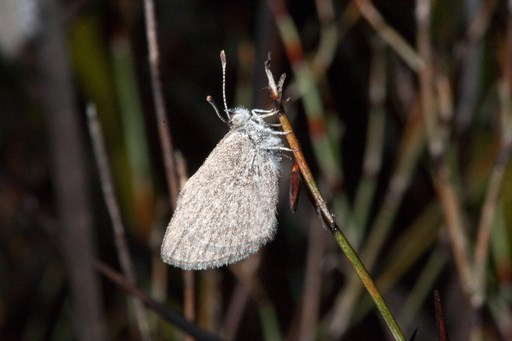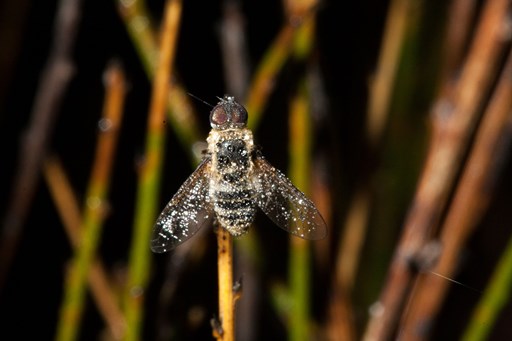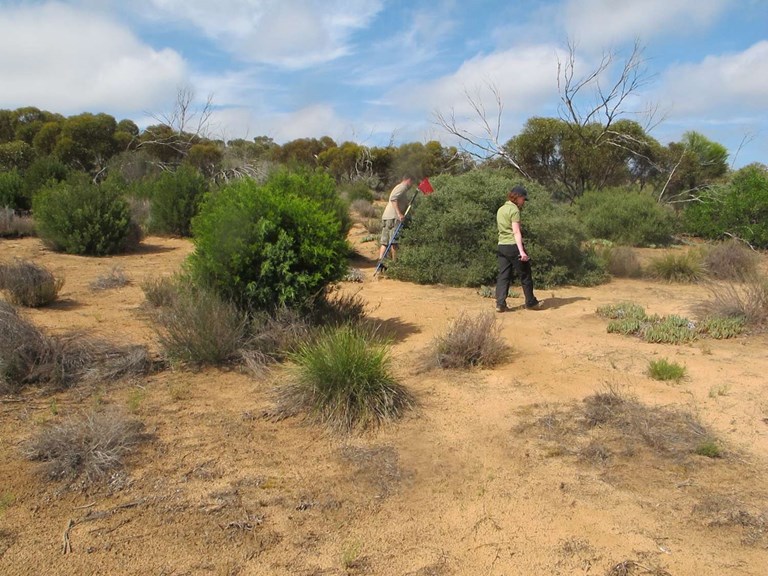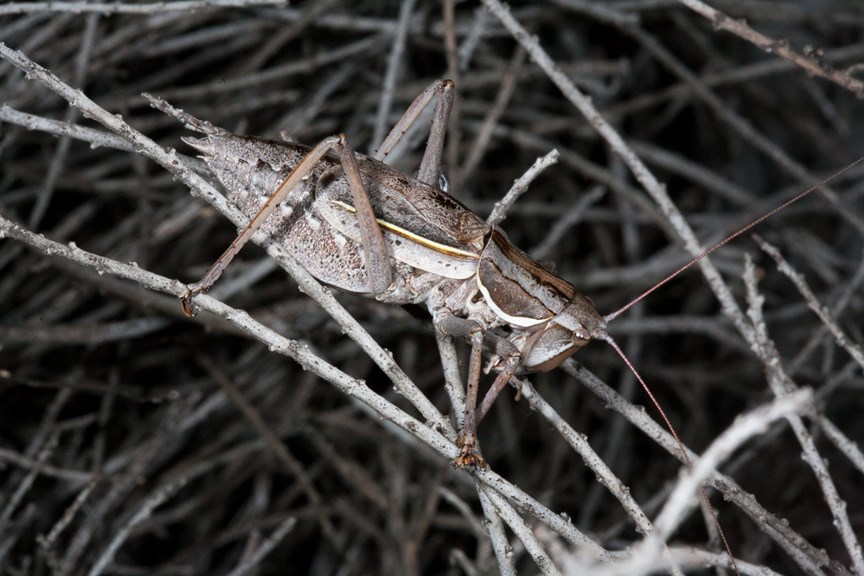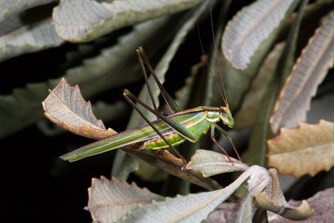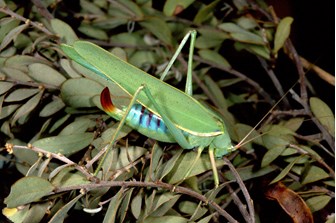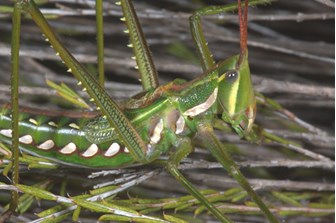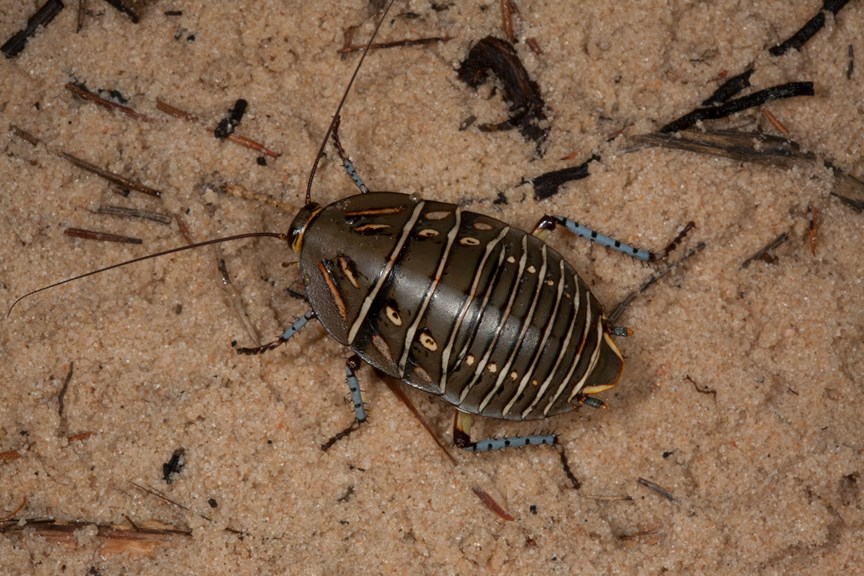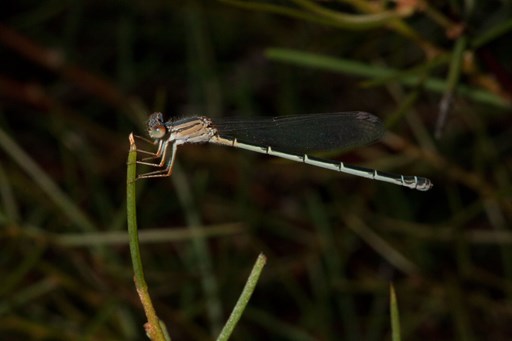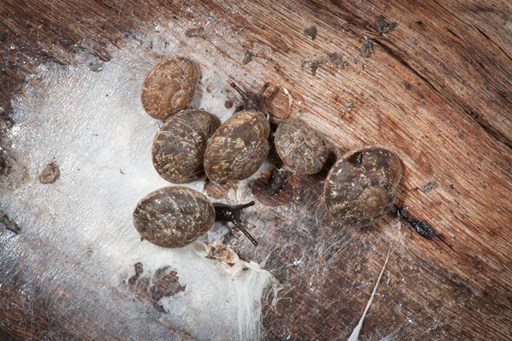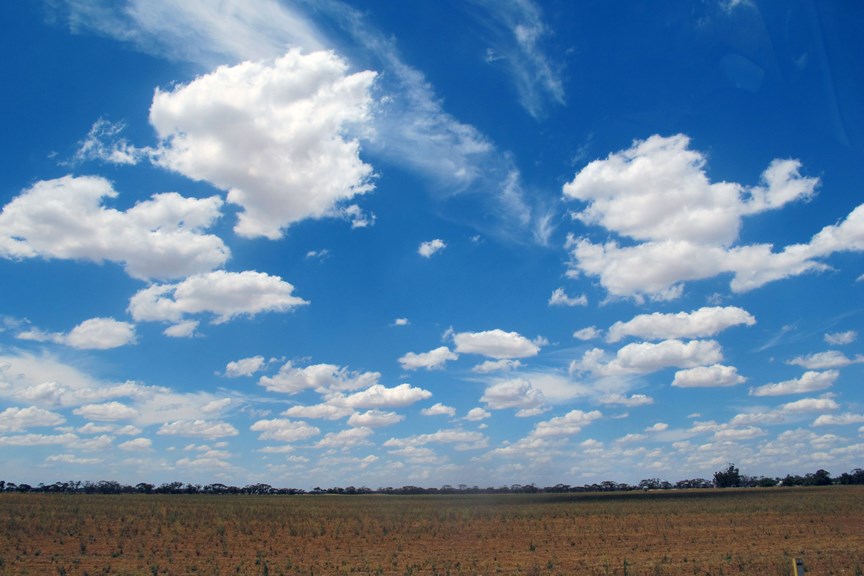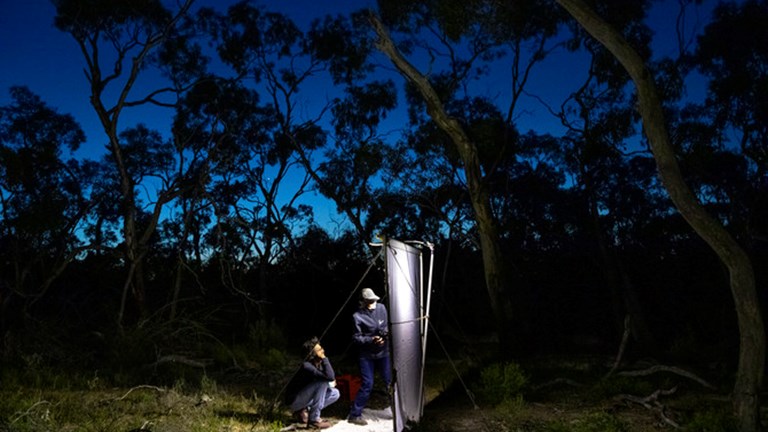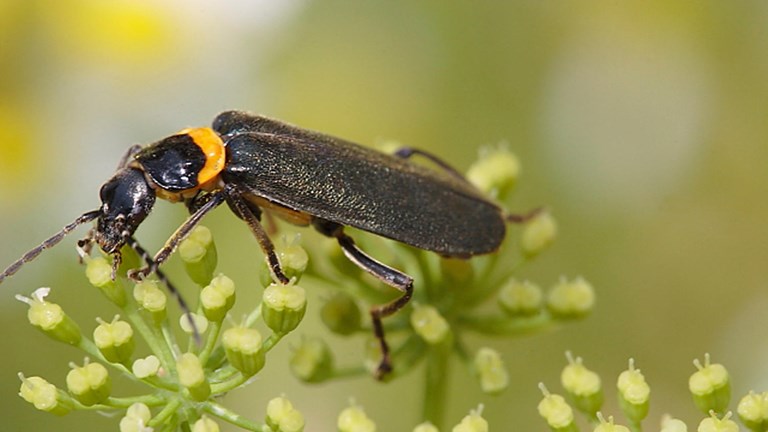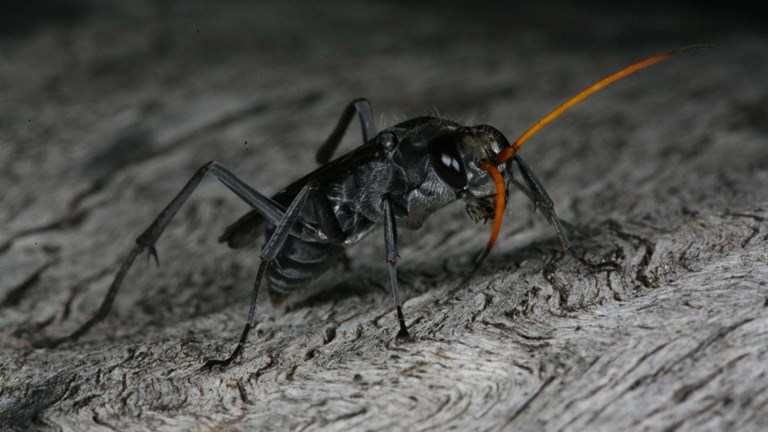Bountiful Mallee
In the Bugs Alive! exhibition at Melbourne Museum you can see almost 50 displays of live invertebrates. Most of them from either tropical or arid parts of Australia, illustrating the adaptations needed for living in extreme environments.
So each year, when the weather conditions are right, we head out to the Mallee to boost our stocks of insects and spiders. The best time to visit is on a hot, humid night just before or just after a thunderstorm. Like most desert species, Mallee insects wait months for the rain and then emerge from the spinifex in their thousands.
At night the desert resonates with the songs of katydids, the loudest of which come from Robust Fan-winged Katydids (Psacadonotus robustus). Unfortunately the fat abdomen of this dun-coloured species is often host to the larvae of tachinid flies (family Tachinidae). These parasites feed on the internal organs before emerging from the katydid which dies soon afterwards.
Most katydid species are surprisingly colourful, sporting bright greens, blues and reds.
One of our prime targets is Mitchell’s Cockroach (Polyzosteria mitchelli) which we breed at Melbourne Museum off-display, perhaps the most beautiful cockroach in Australia. With its golden markings and eggshell-blue legs, this species is one of more than 500 native cockroaches that are rarely seen by the average Australian but which are extremely important in native ecosystems. They shouldn’t be confused with the five or so introduced cockroach species that infest our houses–native cockroaches are happy in the bush and almost never come inside.
The desert seems to wake up after a rainstorm, with unexpected species such as snails and damselflies making an appearance.
Wolf spiders are the dominant ground species, their emerald eyes shining in the torchlight. This male wolf spider (below) was seen halfway down a burrow and was difficult to distract until we discovered the source of his interest—a large female wolf spider at the bottom of the burrow.
The Little Desert, Big Desert, Sunset Country and Hattah-Kulkyne each have their own distinct habitats and faunas, just a few hours’ drive from Melbourne.
